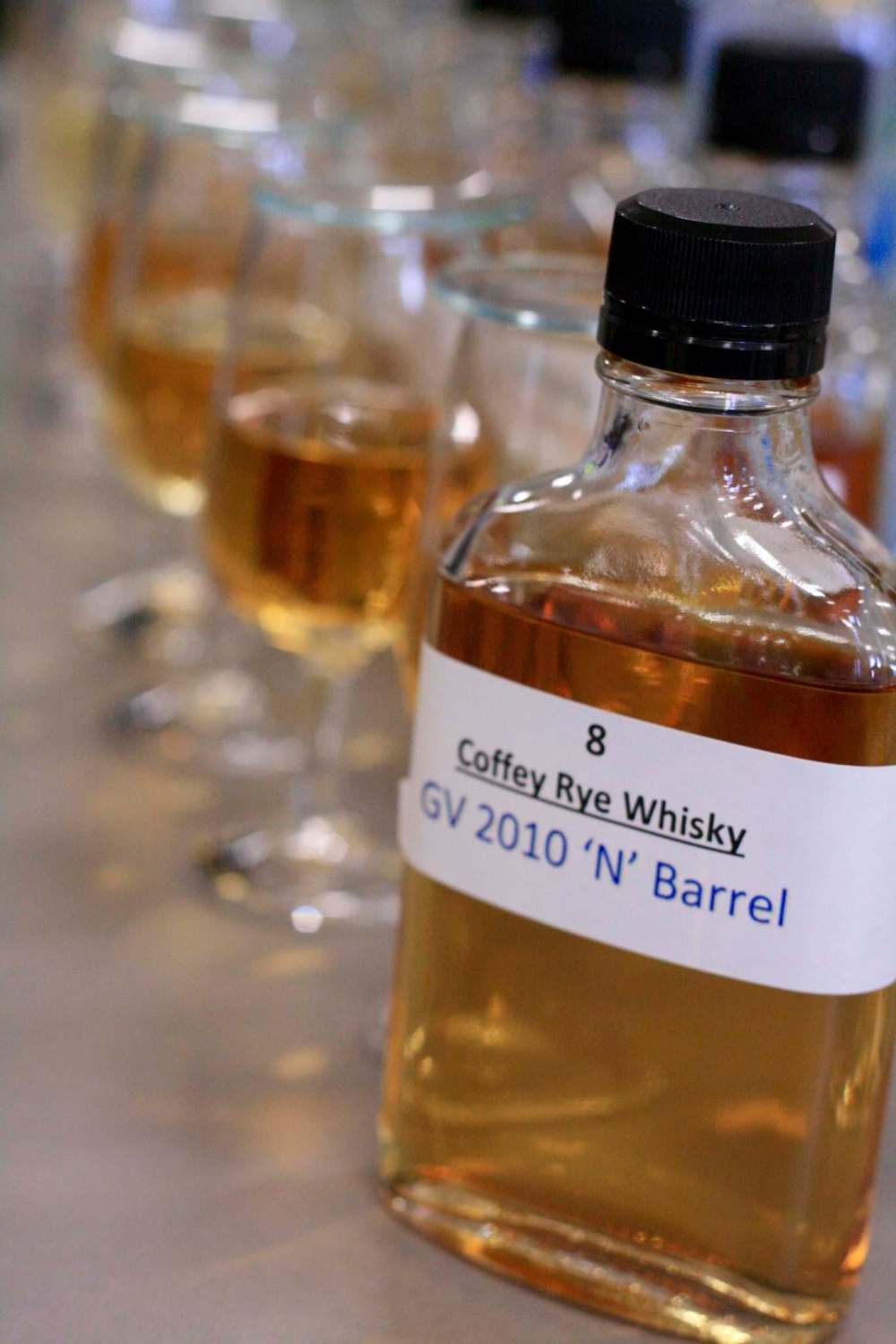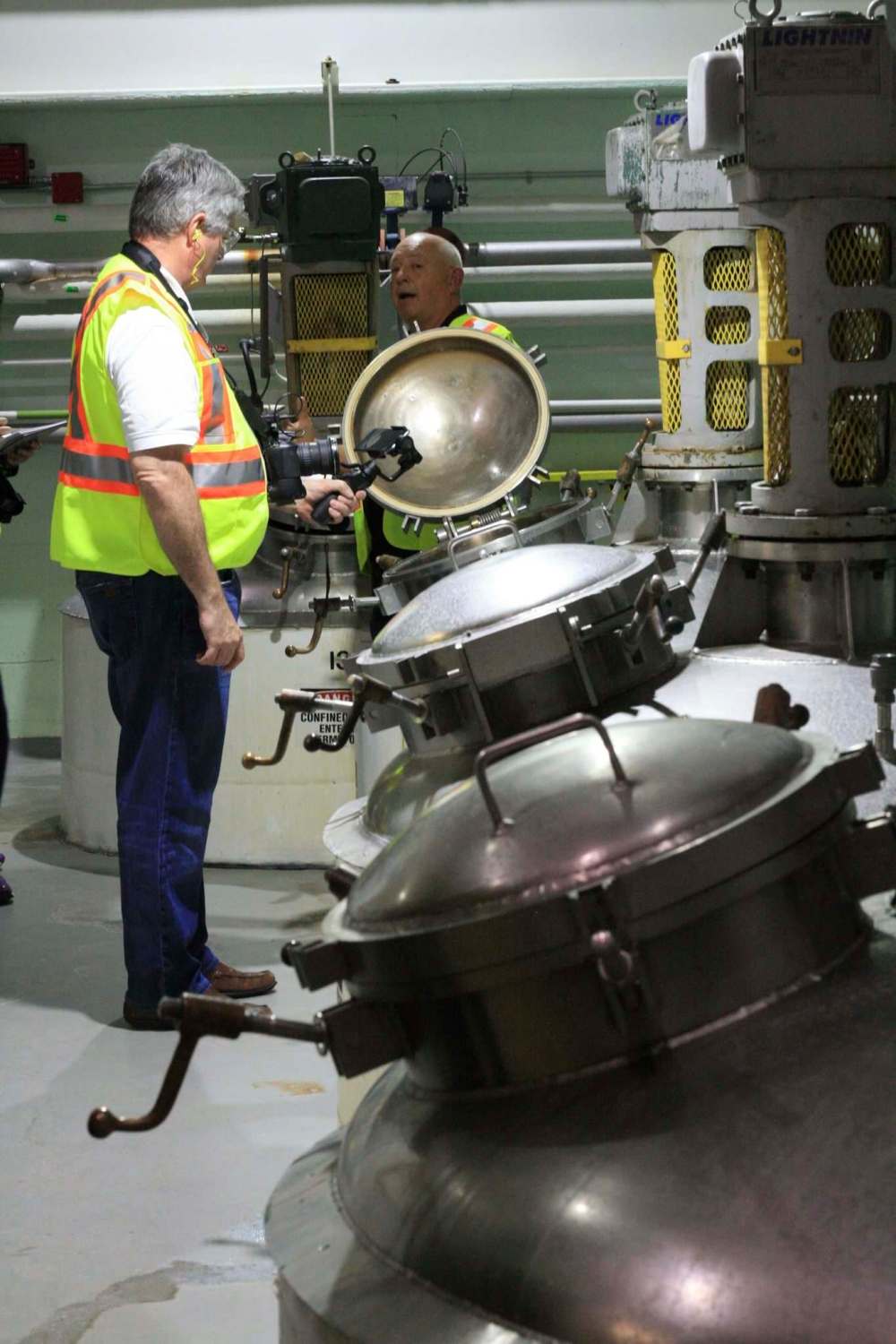Distilling a legacy
A look inside the Gimli facility where Crown Royal is made
Advertisement
Read this article for free:
or
Already have an account? Log in here »
To continue reading, please subscribe:
Monthly Digital Subscription
$1 per week for 24 weeks*
- Enjoy unlimited reading on winnipegfreepress.com
- Read the E-Edition, our digital replica newspaper
- Access News Break, our award-winning app
- Play interactive puzzles
*Billed as $4.00 plus GST every four weeks. After 24 weeks, price increases to the regular rate of $19.00 plus GST every four weeks. Offer available to new and qualified returning subscribers only. Cancel any time.
Monthly Digital Subscription
$4.75/week*
- Enjoy unlimited reading on winnipegfreepress.com
- Read the E-Edition, our digital replica newspaper
- Access News Break, our award-winning app
- Play interactive puzzles
*Billed as $19 plus GST every four weeks. Cancel any time.
To continue reading, please subscribe:
Add Free Press access to your Brandon Sun subscription for only an additional
$1 for the first 4 weeks*
*Your next subscription payment will increase by $1.00 and you will be charged $16.99 plus GST for four weeks. After four weeks, your payment will increase to $23.99 plus GST every four weeks.
Read unlimited articles for free today:
or
Already have an account? Log in here »
Hey there, time traveller!
This article was published 08/07/2017 (3030 days ago), so information in it may no longer be current.
Doug Kozlowski’s career at the Gimli distillery didn’t just start on the ground floor. It began before there was a floor.
Kozlowski was working for his father’s construction company in the late 1960s, at a time when work typically ground to a halt as winter set in and when skyrocketing interest rates devastated the area’s construction market.
So in 1967, when Seagram’s was looking for skilled tradespeople to build a new distillery just north of town, Kozlowski jumped — to the dismay of his father, who had been setting him up to take over the family business.

“Back then, work pretty much ended when winter came, so even though I was making less I figured I came out a bit ahead by working 12 months instead of six,” he said. He was hired as a carpenter, framing the buildings and working on the foundations for the nine-storey distillery and its surrounding buildings.
When the work was done and the plant opened in 1968, Seagram’s hired him in the warehouse. Over his 34-year career with the company, Kozlowski did pretty much every job, from warehouse worker to distillation supervisor and beyond. He retired in 2001.
“It meant a lot,” he said of the distillery’s impact to the community. “Gimli at the time was considered a depressed area, so it qualified for aid from the federal and provincial governments. The municipality gave Seagram’s a 10-year tax holiday.”
In 2000, Seagram’s split its beverage division and sold a part to Pernod and a part, including the Gimli distillery, to Diageo.
On this day, Kozlowski and three other retirees — Jim Boyko, Chris Magnusson and Larry Markuson — are coming out of retirement briefly to be our tour guides, peeling open the purple velvet pouch and giving the media a rare glimpse inside one of Diageo’s most important distilleries. This is, after all, where the 2016 World Whisky of the Year — Crown Royal Northern Harvest — was born.
Boyko said aside from any government incentives, it was water that led to the ultimate decision to locate in Gimli. A giant underground aquifer runs between Lake Manitoba and Lake Winnipeg and Diageo taps into it with a 24-inch diameter well. The distillery uses 18,000 gallons of water per day and a good amount of that is recycled.
Blending Crown Royal and making it taste, smell and look the same year in and year out is a challenge, said Stephen Wilson, the company’s North American brand ambassador.
Rye, corn and malted barley all change slightly from year to year with growing conditions. Combine that with how — despite strict protocols for distillation — parts of the process remain an inexact science and slight changes in the base alcohols and flavouring alcohols are inevitable, he said.
“It’s like you need to copy the Mona Lisa exactly, but the paints Leonardo da Vinci used are no longer available, so you need to mix and match,” he said. That task falls to Joanna Scandella, Crown Royal’s master blender, who samples the various whiskies involved and creates the formula for the Gimli plant to use to create a new batch.
The method is called a five-way test (see below), where groups of quality-control staff will sit in pairs and determine whether a particular blend achieves the standard of quality for a particular product.
Scandella said the process sometimes produces surprises.
“We might find something and say, ‘Wow, that’s really spicy,’ and we’ll call the distillery to see if there’s something different about the batch,” she said. “We’ll sometimes file that away to use for a new product.”
Because of the aging process, planning a new whisky can take as much as a decade or more.

A variety of whiskies go into each bottle of Crown Royal Deluxe, the main product putting Gimli on the whisky drinkers’ map. There are minimally aged whiskies made from rye that are almost clear, to which are added corn-based bourbon-style whiskies and rye whiskies aged in new wood to impart more colour and flavour. From the rye grains, you should sense spices such as clove, while the vanillin acid from the barrels will add a vanilla flavour.
Crown Royal — born in 1939 to mark a visit to Canada by King George VI and Queen Elizabeth I — is blended in Gimli and aged in white oak barrels charred slightly on the inside. The wood and the charring add flavour and colour during the aging process.
It’s then shipped by rail to Amherstburg, Ont., for bottling.
Grain, primarily rye from Manitoba and Saskatchewan, Manitoba corn and malted barley arrive almost daily by truck. When the truck arrives, the grain is sampled and taken to a lab inside the distillery, where it’s checked for quality and moisture content. No grain is off-loaded until it passes inspection. Trucks are turned away if the grain doesn’t measure up.
The grain is ground in hammer grinders before it’s added to water and yeast — the distillery brews its own yeast — for fermentation. In the fermenting vats, you can see the carbon dioxide bubbling to the surface. When the bubbling stops, the yeast is dead and the mash is ready to be filtered into wort, the liquid that feeds the stills.
Different distillation procedures are used, including continuous distillation — in which a still is fed a constant supply — and batch distillation, in which the wort is placed in one large vessel and distilled in one batch.
Once complete, the various whiskies are aged in a variety of barrels depending on the type of whisky: new barrels impart the most flavour, aroma and colour changes and are used to age the flavouring whiskies. Older barrels impart far fewer changes and are used to age the base whiskies.
Today, the Gimli distillery is the world’s only source of Crown Royal.
kelly.taylor@freepress.mb.ca

Kelly Taylor
Copy Editor, Autos Reporter
Kelly Taylor is a copy editor and award-winning automotive journalist, and he writes the Free Press‘s Business Weekly newsletter. Kelly got his start in journalism in 1988 at the Winnipeg Sun, straight out of the creative communications program at RRC Polytech (then Red River Community College). A detour to the Brandon Sun for eight months led to the Winnipeg Free Press in 1989. Read more about Kelly.
Every piece of reporting Kelly produces is reviewed by an editing team before it is posted online or published in print — part of the Free Press‘s tradition, since 1872, of producing reliable independent journalism. Read more about Free Press’s history and mandate, and learn how our newsroom operates.
Our newsroom depends on a growing audience of readers to power our journalism. If you are not a paid reader, please consider becoming a subscriber.
Our newsroom depends on its audience of readers to power our journalism. Thank you for your support.


